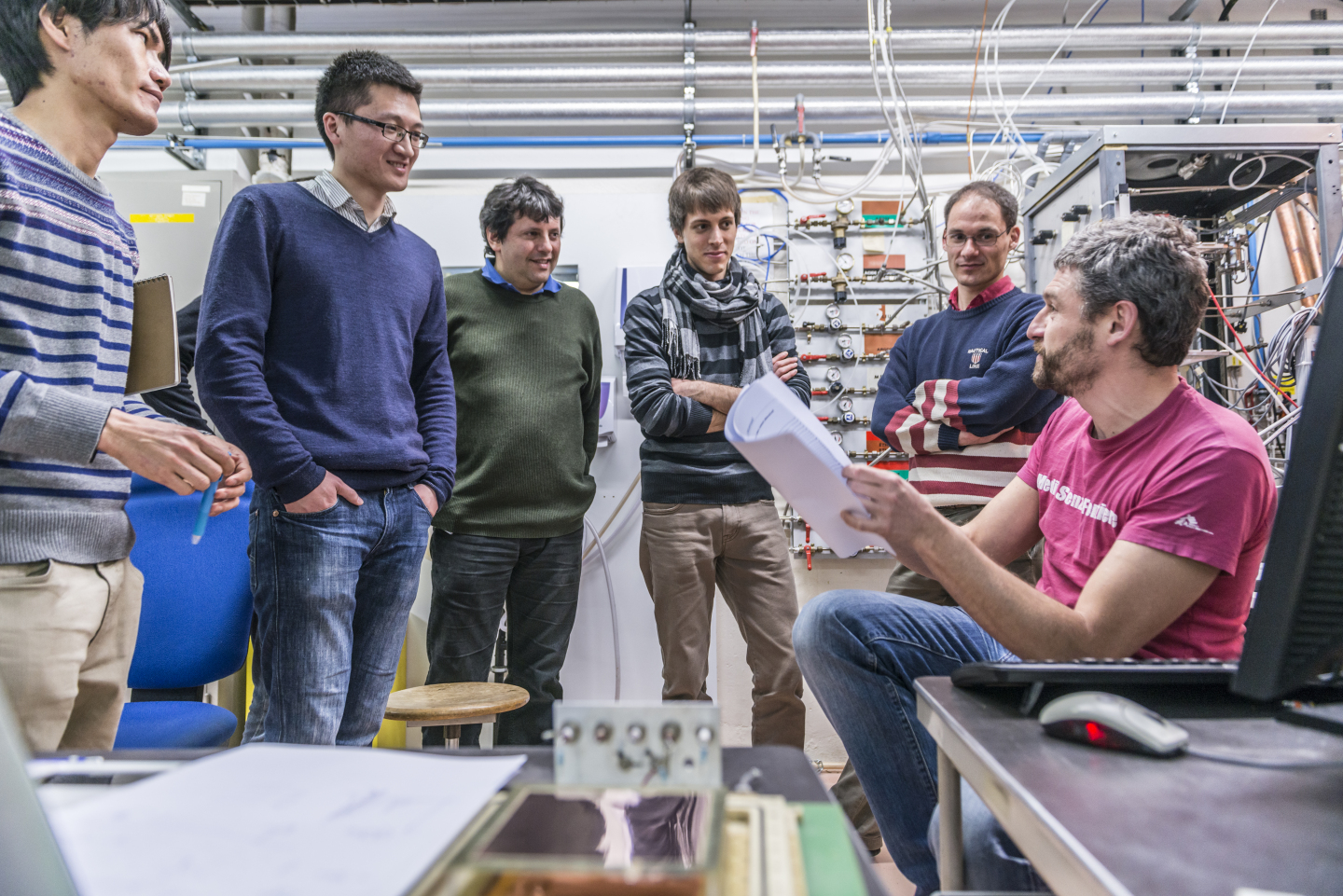This week at CERN, students in electronics design and implementation examined next-generation readouts, trackers and detectors as part of the RD51 collaboration's electronics school.
The school, coordinated by CERN's Hans Muller and Eraldo Oliveri, included 12 speakers and supervisors and comprised lectures and hand-on training for students, engineers and physicists from RD51 collaborating institutes interested in developments in electronics.
See a full list of the talks here.
The RD51 collaboration was founded in 2008 to advance technological development of Micro-Pattern Gaseous Detectors and associated electronic-readout systems for applications in basic and applied research and to share information, results and experience. This group of detectors includes, for example, the Gas Electron Multiplier (GEM), thick-GEM structures and the Micro-Mesh Gaseous Structure (Micromegas) - each extensively used in experiments in high-energy physics, including those at the LHC at CERN.
All gas detectors use the same principle to detect passing particles. As a charged particle passes through the detector, it ionises the gas. In early gas detectors – such as the Mult-Wire Proportional Chamber, invented by Georges Charpak in 1968 – the charge from the ionization collects on a wire, which sends a signal to a computer to record the presence of particle.
Though this invention revolutionized particle detection, which moved from optical-readout devices – such as bubble chambers – to electrical systems, position-sensitive devices based on wire structures are limited by diffusion processes and by space-charge effects in the gas. So with this technology, the positions of particles can only be located to accuracies of about 50 to 100 micrometres.

Participants and teachers at the RD51 electronics school at CERN (Image: Anna Pantelia/CERN)
That's where Micro-Pattern Gas Detectors come in. Advances in photo-lithography, microelectronics and printed-circuit board techniques over the past 20 years have triggered a major transition from wire structures to the Micro-Pattern Gas Detector (MPGD) concepts, revolutionizing cell-size limits for many gas-detector applications. MPGDs detect ionization not with wires, but on fine printed strips or pads (with typical size or pitch of about 100 micrometres) placed below GEM or Micromegas amplification structures.
Their excellent spatial and time resolution, high rate capability, low mass, large active areas, and radiation hardness make them an invaluable tool to confront future detector challenges at the frontiers of research.
Which is why the RD51 school focused on them.
"I enjoyed the school this week and learned a lot," wrote Sarah Jones of the University of Arizona in the US, in an email thanking the organizers. "It was a lot of information packed into only three days, but I found it will be useful for my research." Stefano Levorato of INFN in Italy was another satisfied attendee. "The school was extraordinary!" he says. "The organization was perfect and I like the balance mixing of theory and practice. "
Some 450 people from 30 countries in Europe, America, Asia and Africa at 91 universities and research laboratories make up the RD51 collaboration.

